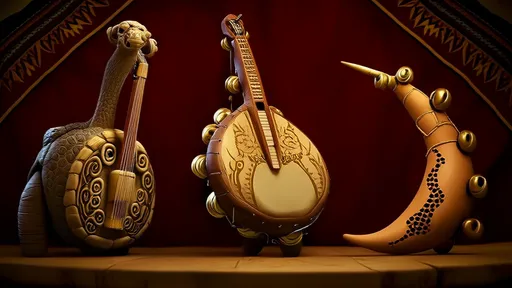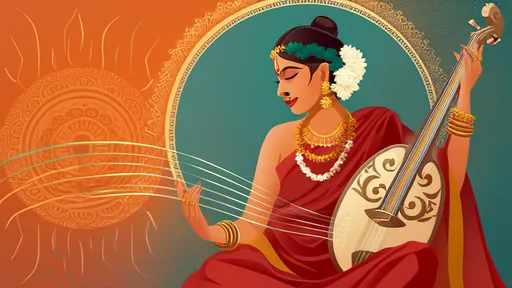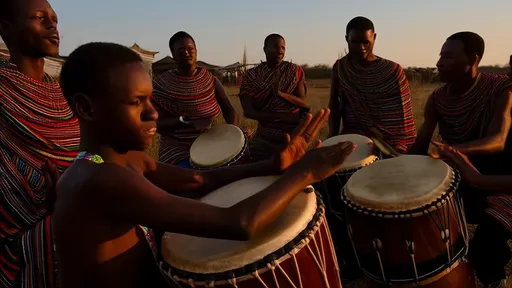The sitar, with its resonant strings and intricate carvings, stands as one of India’s most iconic musical instruments. Its haunting melodies have captivated audiences worldwide, yet few truly understand the profound mysteries embedded within its scales and ragas. The sitar is not merely an instrument; it is a vessel of ancient wisdom, a bridge between the earthly and the divine. To explore its scales is to embark on a journey through centuries of spiritual and musical evolution.
The foundation of the sitar’s tonal magic lies in its unique tuning system. Unlike Western instruments, which adhere to fixed scales, the sitar operates within a fluid framework of microtones known as shrutis. These microtones allow for subtle gradations in pitch, creating a richness of expression that is impossible to replicate on a piano or guitar. The concept of shrutis dates back to the Vedas, where sound was considered a sacred force capable of altering consciousness. A skilled sitar player doesn’t just play notes—they navigate a landscape of emotional and spiritual resonance.
Central to the sitar’s mystique is the Raga system, a complex melodic structure that governs Indian classical music. Each raga is more than a scale; it is a living entity with its own personality, time of day, and even season. Some ragas are said to bring rain, while others evoke longing or joy. The sitar’s sympathetic strings, which vibrate in harmony with the main strings, amplify this effect, creating a shimmering aura of sound. When a master like Ravi Shankar or Vilayat Khan plays, the raga unfolds like a story, revealing layers of hidden meaning.
The physical construction of the sitar also contributes to its enigmatic sound. The gourd resonator, the curved frets, and the jawari bridge are all meticulously designed to produce its signature timbre. The jawari, in particular, is a marvel of acoustic engineering. Crafted from deer antler or bone, it is shaped to create a buzzing effect that mimics the human voice. This "living" quality makes the sitar sound almost as if it is singing, whispering secrets to those who listen closely.
Beyond its technical brilliance, the sitar embodies a philosophy of music as a path to enlightenment. In Indian tradition, the act of playing or listening to a raga is a form of meditation. The repetitive cycles of alap, jor, and jhala—the three movements of a traditional sitar performance—guide the listener into deeper states of awareness. The alap, slow and contemplative, mirrors the search for truth. The jor introduces rhythm, symbolizing the pulse of life. Finally, the jhala erupts in a cascade of notes, representing the ecstasy of spiritual realization.
Modern science has begun to uncover what ancient musicians knew intuitively. Studies have shown that the sitar’s complex harmonics can induce alpha brainwaves, a state associated with relaxation and creativity. The interplay between the main strings and the sympathetic strings creates a phenomenon known as "beating," where overlapping frequencies produce a pulsating effect. This sonic vibration aligns with the concept of Nada Brahma—the belief that the universe is created from sound.
Yet, for all its depth, the sitar remains an instrument of paradox. It is both ancient and modern, structured and free, mathematical and emotional. Its scales are not just sequences of notes but maps to unseen realms. To play the sitar is to converse with the divine, to touch the ineffable. And perhaps that is the greatest mystery of all—how a handful of strings and a gourd can hold the cosmos within their resonance.

By /Aug 5, 2025

By /Aug 5, 2025

By /Aug 5, 2025

By /Aug 5, 2025

By /Aug 5, 2025

By /Aug 5, 2025

By /Aug 5, 2025

By /Aug 5, 2025

By /Aug 5, 2025

By /Aug 5, 2025

By /Aug 5, 2025

By /Aug 5, 2025

By /Aug 5, 2025

By /Aug 5, 2025

By /Aug 5, 2025

By /Aug 5, 2025

By /Aug 5, 2025

By /Aug 5, 2025

By /Aug 5, 2025

By /Aug 5, 2025